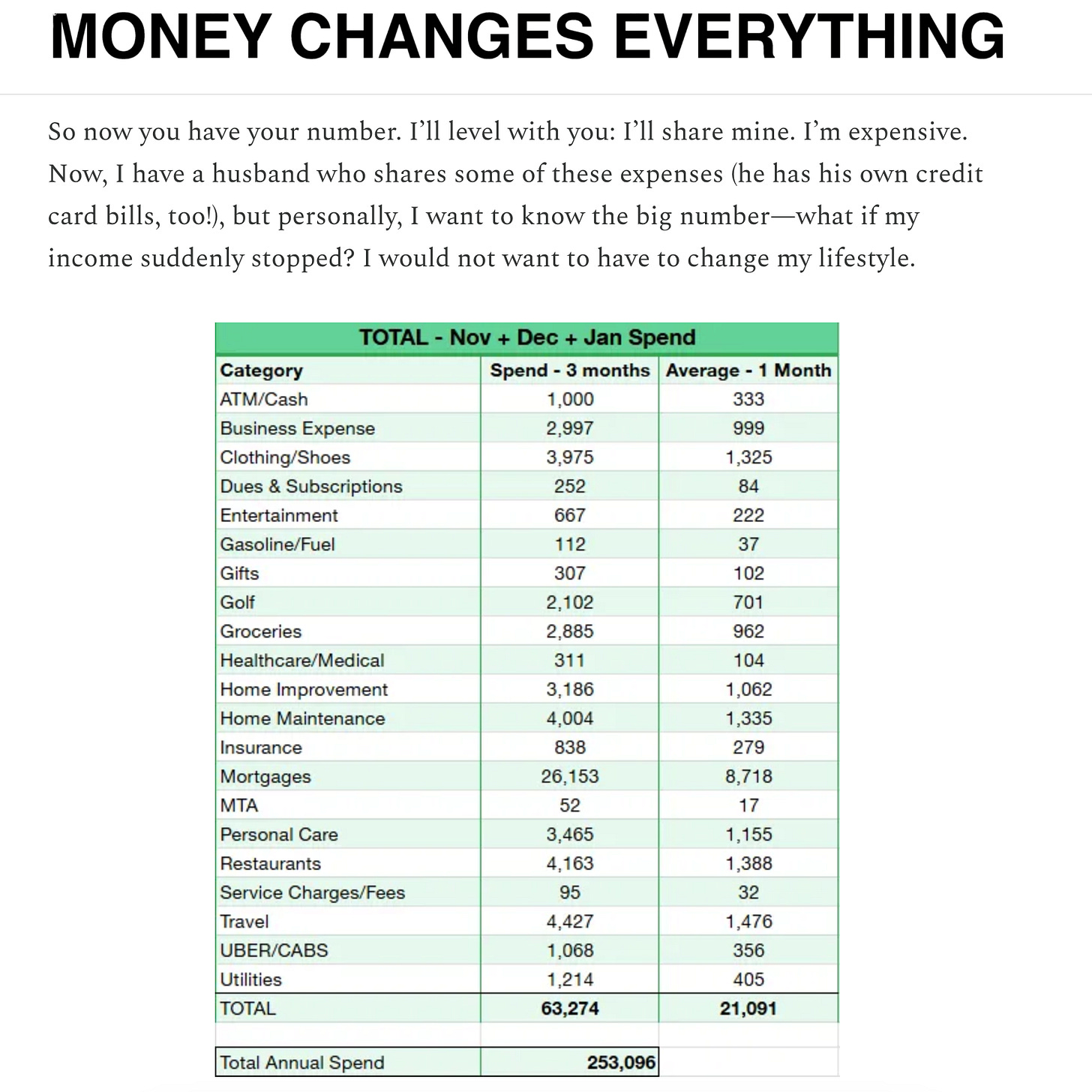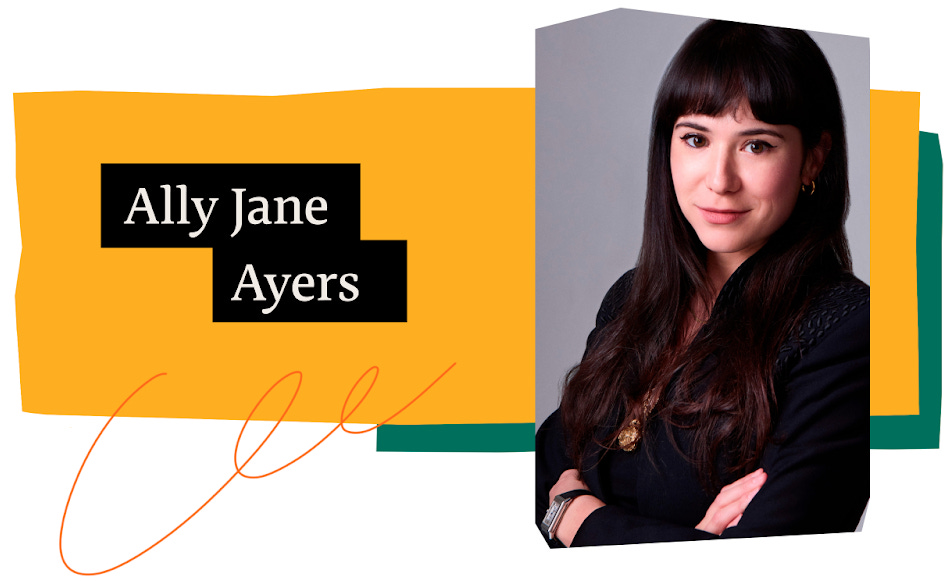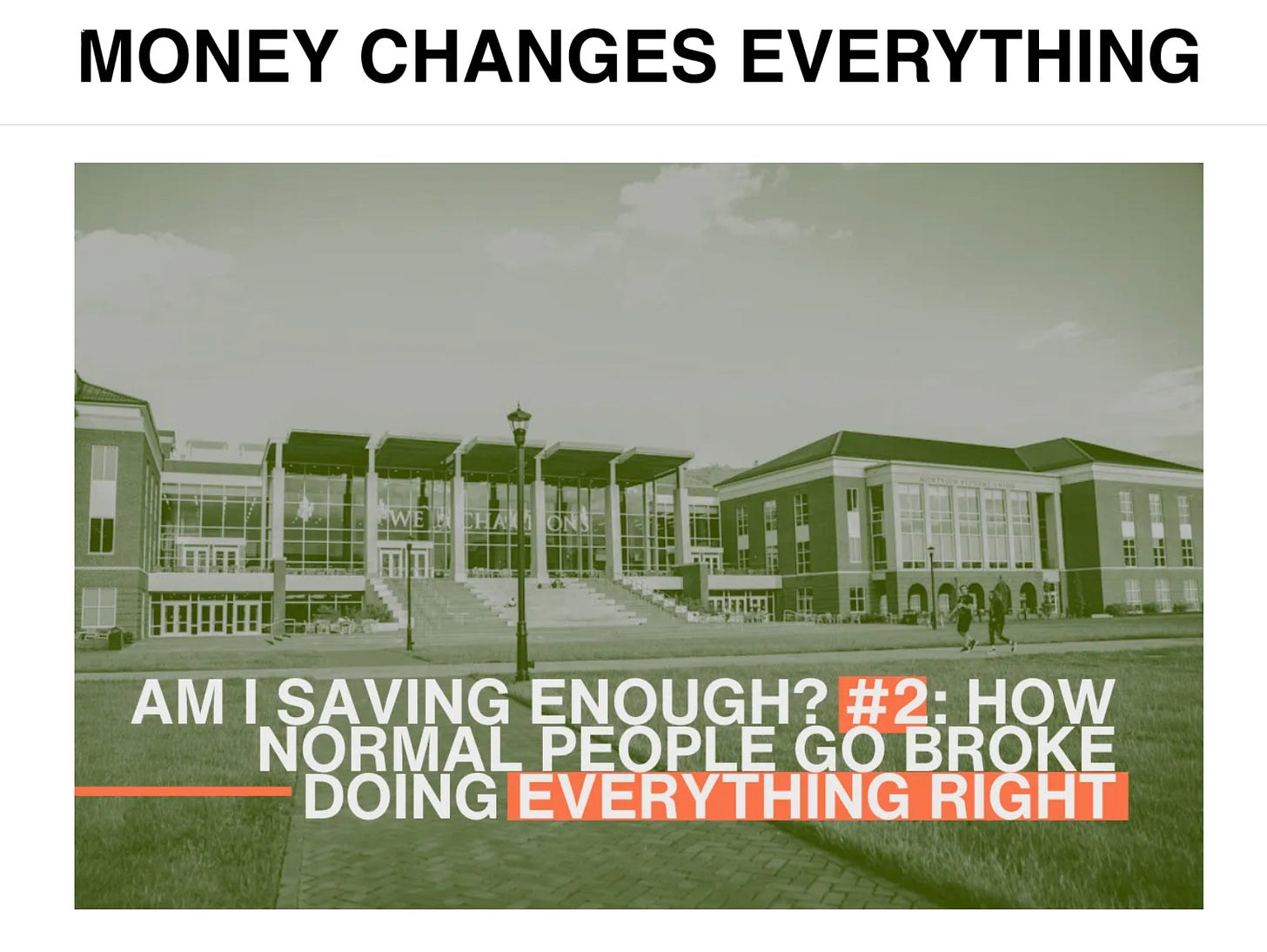The Grow interview series is designed to share the nuts and bolts of how writers have gone independent and grown their audience on Substack. It has been edited for length and clarity.
Fledgling publisher
launched on Substack with no social media following or interest in chasing viral posts. Instead, she focused on creating relatable, practical essays about money. Within weeks, her writing—and a thoughtful collaboration—garnered the attention of editors, leading to a book deal. In this interview, AJ talks about using Substack to pressure-test ideas and building community instead of a brand.What’s your Substack about?
is about making money less terrible for people. I approach each newsletter trying to say something that might help someone feel hopeful and not helpless with money. My goal is to help my readers build financial security without losing their souls in the process. It’s about financial advice that actually fits real lives.I offer a mix of real-world financial strategy, emotional insight, and permission to want more for yourself. My background combines technical expertise (I’m a CFP, an Enrolled Agent, a Certified Equity Professional, and a few other designations that don’t mean much to the general public) with real, lived experience. I started out in my late 20s as someone who didn’t know what an ETF was and had never once checked their 401(k). I try to meet readers where they are, without shame, and without dumbing things down. I try to talk to my readers like I would a friend at a bar.
What was going on in your personal and professional life when you got started on Substack?
I had spent the prior six years building my financial planning firm, Brooklyn Fi, from the ground up. I was tired and a little burned-out. As much as I wanted to write, it didn’t come easily at first. I knew I wanted to write a book about money for those who fear it. When I stepped away from the day-to-day operations of the firm, I started writing the book proposal. I sent it to a few agents, and I mostly got the same response, which was “I love your writing, but I can’t sell this book because you don’t have a social media following.” That was discouraging to hear, since social media is filled with so much harmful personal finance advice. Someone said, “Start a newsletter.” I filed that away for a while, because the idea of writing monthly or even weekly was so daunting. Eventually I just started writing, and it sort of poured out of me. I launched the Substack a few weeks later.
Did you have a social media presence before joining Substack?
Not a meaningful one separate from my financial advisory firm. Brooklyn Fi has a website and LinkedIn presence, but I wasn’t a “personal brand” or posting on Instagram or TikTok. I’ve always been a little allergic to performative internet culture. There are a lot of harmful personal finance influencers spouting “tax hacks,” so I didn’t want to participate in that.
How often do you publish?
Once a week, on Tuesdays.
What are the types of content you post?
Personal finance advice that assumes you’re a real person with competing priorities and imperfect habits. My aim is really to educate and inform, not overwhelm and shame. Reader case studies through my recurring series “Am I Saving Enough?” Essays on the emotional side of money and how money impacts relationships. I explore fear, ambition, shame, enoughness, the stuff no one wants to admit at cocktail parties but everyone feels.
Growth by the numbers
When did you first post on Substack? January 6, 2025
How many total subscribers do you have? Just over 1,800
How many paid? 32
Most of my organic growth came through my writing and the Substack app: people forwarding newsletters to friends, a few shares on Notes, and word of mouth. I had a small initial audience of 200 friends, colleagues, and family, but the vast majority found me through the Substack community.
Publishing the first Am I Saving Enough? case study was a big milestone. I was hesitant to do any sort of voyeuristic pieces about how people spend and save, but I realized that’s what a lot of readers want: they want validation that what they are doing is “normal” or “okay.” Readers want to hear about someone who is doing a lot right and still feels stuck. Since people are reluctant to have these conversations with real people in their lives, I think a lot of readers find spaces online.
I must mention
, who originally brought us “Money Diaries” at Refinery 29 and now runs on Substack. Lindsey and I were introduced through mutual friends and immediately hit it off the first time we hung out (it was a very financially sensible walking date, if I remember correctly). I wrote a piece for The Purse about how to get the most out of working with a financial advisor, which led to significant growth for my fledgling newsletter just a few weeks after I launched.When did you start hearing from book publishers?
About three weeks after I launched my Substack, an editor from Penguin Random House reached out. She specifically called out
’s Substack as the place where she was introduced to my writing. A few weeks later, we met for coffee and had a long chat about audience and Substack and how to sell a book about personal finance without 200,000 TikTok followers. She took a chance on me and offered me a book deal a few weeks later.The book is called Creative Money: New Financial Rules for Artists, Innovators, and Misfits, and it will be published in fall 2026. It’s about money, but it’s also about much more than that. It’s about how to talk to your partner about buying a house without it turning into a fight. It’s about freelancing, investing, navigating taxes, starting over, starting something new, and shedding the shame so many of us carry around our finances.
What have you learned about how the publishing industry views Substack?
Based on my experience, it’s very clear that editors are reading writers on Substack and that it’s an opportunity for direct connections. Unlike social media, Substack is direct evidence that someone is willing to pay to read your writing, or at least allow you to send them an email that 50% of the time they read!
How has publishing on Substack influenced your writing?
Substack gave me the space to figure out not just what people needed help with, but how they needed to hear it. What metaphors worked? What stuck? What didn’t? What tone is right? The book will be tighter and more structured, but it owes a lot to the conversations and feedback on Substack.
How do you engage with your community?
I love the depth of connection [on Substack]. Notes has been great for quick exchanges, but the real gold is in comments and emails. People are reluctant to share their money wins and fails IRL, but people have no issue writing back with their own stories, fears, and questions right in the public comments. It feels intimate and honest.

What have you learned about making money on Substack?
People want to support creative output. Even if you don’t offer anything extra to your paid subscribers, you’ll find that people are willing to give you a few bucks every month just because they like what you’re publishing and they want you to keep doing it.
How do you advise Substack creators to manage their income?
One of my financial planning firm’s oldest and dearest clients found their voice on Substack. It’s amazing to see the growth of the platform and how, for some creators, it can be a real source of income. I work with business owners of all types, and the refrain for so many first-timers is the same: why do I have such a huge tax bill? It’s nearly impossible to avoid that first surprise. Remember, kids, any money you make that isn’t coming in the form of a consistent paycheck where someone else sets your hours probably doesn’t have taxes withheld, which means you have to pay the tax yourself. I recommend saving 50% of all untaxed income in a high-yield savings account throughout the year so any surprise tax bill can be handled easily. And of course, any leftovers should be invested in one of my favorite tax-advantaged retirement accounts.
What is the sharpest piece of advice you can offer other writers about growing a Substack publication?
Trust that good work compounds over time. The temptation to chase trends or hack your way to faster growth is real, but nothing beats showing up consistently with something valuable to say.
What questions do you have for AJ that we didn’t ask? Leave them in the comments!
To read more from this series on growing your publication, see our interviews with Jo Hutton, Mikala Jamison, Wendy MacNaughton, Noah Smith, Carissa Potter, Jørgen Veisdal, Anne Byrn, Nishant Jain, Michael Fritzell, Glenn Loury, Erik Hoel, Jessica DeFino, Mike Sowden, Elizabeth Held, Jonathan Nunn, Polina Pompliano, Michael Williams, Judd Legum, and Caroline Chambers.








Share this post